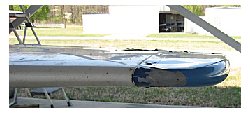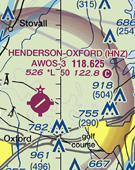Newsletter: February 2009
SYNOPSIS
Wind, wind and more wind has been the norm since the beginning of the year, and not the exception. For those who needed crosswind landing practice, conditions have been ideal. As Spring comes “marching in” with still more windy conditions, one must be prepared for those gusty, “fly the airplane to the runway” techniques. Be prepared for wind sheer, turbulence and high sink rates. As a pilot one must be ready at all times to add or subtract power on approach and feel the airplane to the runway. Pitch and power all the way to the ground. It’s also very important that one get the winds aloft forecast at 3000′ and 6000′. What appears to be calm on the surface can be a real a surprise aloft.
The unusual summer-like temperatures over the past week have introduced density altitude into the equation earlier than expected. We’ve had days where the field elevation has been close to 2,200 ft vs. the actual 309 ft MSL. Don’t forget the significant impact density altitude has on aircraft performance, particularly during takeoff and landing.
NOTAMS
 An aircraft has been damaged while being moved in or out of a hangar and no one has come forward to claim responsibility. N8432U has visible damage on the leading edge of the horizontal stabilizer as seen in the following pictures. There is also a noticeable dent in the wooden hangar post where paint is embedded.
An aircraft has been damaged while being moved in or out of a hangar and no one has come forward to claim responsibility. N8432U has visible damage on the leading edge of the horizontal stabilizer as seen in the following pictures. There is also a noticeable dent in the wooden hangar post where paint is embedded.
Ground maneuvers should be done slowly and with the greatest of care, whether you are taxing the airplane or moving it with a tow bar. If you are not comfortable moving a plane into (or out of) a hangar, just ask for help!
 Most importantly, think safety first. Do not leave items like this for the next pilot to discover during a preflight. If you notice something is wrong with an aircraft, at minimum, make a note in the log book. If it’s significant and I or another instructor is not around, call me (Paul) on my cell phone, leave a note on my desk / under the office door, and if appropriate, put a note on the yoke of the aircraft alerting the next pilot.
Most importantly, think safety first. Do not leave items like this for the next pilot to discover during a preflight. If you notice something is wrong with an aircraft, at minimum, make a note in the log book. If it’s significant and I or another instructor is not around, call me (Paul) on my cell phone, leave a note on my desk / under the office door, and if appropriate, put a note on the yoke of the aircraft alerting the next pilot.
As a result of the recent rash of damages, all pilots will need to sign a simple Rental Agreement I will have ready in the coming weeks. Everyone must also have on file a copy of their current FAA Medical and FAA License.
I am also going to require all pilots (including student pilots with solo privileges) to show proof of Aircraft Renters Insurance within the next 45 days. This is the first time I’ve considered this in the 17 years I’ve operated a flight school. However, I must know you have the coverage to pay for damage to an aircraft. To date, I am still in collection proceedings with the pilot that caused over $17k in damages to N5144L in November ’05 after a hard landing at 8NC8 where the nose gear collapsed and the firewall buckled. The NTSB report is available here.
AOPA has a very good renter’s insurance program that can be found through their website or through this link: http://www.aopaia.com/
PREFLIGHT
I cannot emphasize the importance of proper weather briefs as we enter the season where heat, density attitude, and thunderstorms can impact your flying, particularly in the afternoon. Listening to the ATIS/ASOS at RDU, TDF, HNZ or some other local airport is NOT a weather briefing! Even if you only plan on staying around the field, you must know the forecast, winds aloft, and if there are any TFRs in the vicinity. A METAR is not going to give you any of this information. Call 800-WX-BRIEF for an abbreviated briefing (at minimum), or use one of the many online resources where you can obtain complete (and official) information.
Checkrides
Martin Bueschel, Craig Wilson, Rebecca Murphey and Christopher Neve all passed their Private Pilot Single Engine Land (PP-SEL) checkrides. Well done!
Biennial Flight Review (BFR)
Wayne Webster
AIRCRAFT NEWS
N7746T was sold to Craig Wilson.
N5144L is undergoing its annual inspection and will be back online the first week of May.
N8432U just had a 100 hr inspection.
N8432C recently had a landing gear replaced.
EXTENDED OUTLOOK
Take care, fly smart and safe. Make sure weather briefs are complete, and look out for those troublesome TFRs. Tornado season is around the corner with squall lines and nasty thunderstorms.
– Paul


